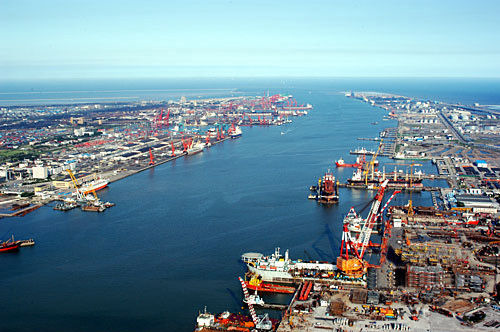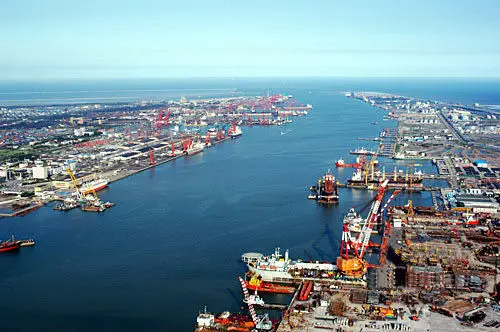By Jiang Bo from People’s Daily

China’s Belt and Road initiative is attracting more world attention as annual sessions of National People’s Congress (NPC) and Chinese People’s Political Consultative Conference (CPPCC), also referred to as the “two sessions,” are just around the corner.
Pakistani Ambassador to China Masood Khalid said he hopes the meetings will cover agendas on accelerating the construction of the routes.
“Like most international observers, I would follow each agenda during the two sessions, especially the ones related to the fields of economy and connectivity,” he added.
Proposed by Chinese President Xi Jinping in 2013, the Belt and Road initiative refers to building the Silk Road Economic Belt and the 21st Century Maritime Silk Road. The visionary strategic plan is aimed at building involved countries into a community of common interests and shared destiny featuring mutual benefit and common prosperity.
Encompassing 66 countries and regions in three continents, the routes begin from China and run through Central Asia, Southeast Asia, South Asia, West Asia and even some parts of Europe.
The investment amount of projects across the Belt and Road region has been growing at a compound annual growth rate (CAGR) of 33 percent since China put forward the initiative in 2013, said Simon Burke, head of the financing department at PwC Hong Kong.
Last year, the average GDP growth of the region was 4.6 percent, outnumbering the average 3.6-percent-growth of emerging markets, he added.
“More than that, the Belt and Road initiative benefits the world in so many ways,” Zhang Jianping, head of the Research Center for Regional Economic Cooperation under China's Ministry of Commerce told the People’s Daily.
He further added that the initiative focuses on not only infrastructure construction of the countries along the routes, but also their bilateral trade and two-way investment.
Data released by the Ministry of Commerce shows that China's combined imports and exports with countries along the routes topped 918.4 billion dollars in 2016, up 0.6 percent from 2015.
Chinese businesses helped build 56 economic and trade cooperation zones in about 20 countries along the Belt and Road with a combined investment surpassing 18.5 billion dollars, generating nearly 1.1 billion dollars in tax revenue and about 180,000 jobs in those countries.
Besides this important political event, the international cooperation summit forum on the "Belt and Road" initiative to be held on May 14 to 15 will bring around round of “Belt and Road” fever.
Pakistani Ambassador to China Masood Khalid said he hopes the meetings will cover agendas on accelerating the construction of the routes.
“Like most international observers, I would follow each agenda during the two sessions, especially the ones related to the fields of economy and connectivity,” he added.
Proposed by Chinese President Xi Jinping in 2013, the Belt and Road initiative refers to building the Silk Road Economic Belt and the 21st Century Maritime Silk Road. The visionary strategic plan is aimed at building involved countries into a community of common interests and shared destiny featuring mutual benefit and common prosperity.
Encompassing 66 countries and regions in three continents, the routes begin from China and run through Central Asia, Southeast Asia, South Asia, West Asia and even some parts of Europe.
The investment amount of projects across the Belt and Road region has been growing at a compound annual growth rate (CAGR) of 33 percent since China put forward the initiative in 2013, said Simon Burke, head of the financing department at PwC Hong Kong.
Last year, the average GDP growth of the region was 4.6 percent, outnumbering the average 3.6-percent-growth of emerging markets, he added.
“More than that, the Belt and Road initiative benefits the world in so many ways,” Zhang Jianping, head of the Research Center for Regional Economic Cooperation under China's Ministry of Commerce told the People’s Daily.
He further added that the initiative focuses on not only infrastructure construction of the countries along the routes, but also their bilateral trade and two-way investment.
Data released by the Ministry of Commerce shows that China's combined imports and exports with countries along the routes topped 918.4 billion dollars in 2016, up 0.6 percent from 2015.
Chinese businesses helped build 56 economic and trade cooperation zones in about 20 countries along the Belt and Road with a combined investment surpassing 18.5 billion dollars, generating nearly 1.1 billion dollars in tax revenue and about 180,000 jobs in those countries.
Besides this important political event, the international cooperation summit forum on the "Belt and Road" initiative to be held on May 14 to 15 will bring around round of “Belt and Road” fever.
 Menu
Menu
 “The Belt and Road” to dominate agendas of China’s “two sessions”
“The Belt and Road” to dominate agendas of China’s “two sessions”
















